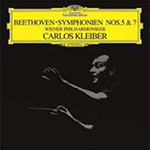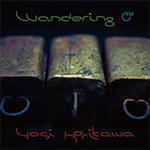In any case, I found my almost 25m² space with 2.7m ceiling to be the lower limit of what feels sensible so the Q3 should fill even larger rooms with proper bass. A few centimetres more space from the front wall than my ATC was good and with a little wool filler in the reflex tubes, bass power can cut some should a room require it. Just never use foam bungs. Those can lead to midrange discoloration. Given relatively small though well-engineered drivers, we don't expect extreme party levels without consequences as Physics won't cooperate beyond a certain point. For example the complex bass structures in Subsignal's brilliant "Sliver (The Sheltered Garden)" from A Poetry of Rain noticeably softened as I cranked up SPL. At still more neighbourhood-unfriendly levels, strain distortion became apparent on some extremely powerful bass pedals on Marian Hill's "Differently" from Unusual.

 At the other end of the SPL scale so below conversational volumes, I noticed that the very lowest bass was barely audible. However, across a widely usable band, the Q3 delighted with its elastic springy bass. That was lotsa fun. Here too "Differently" was a perfect example. If you now have flashbacks of our review on Raidho's €7.3K X1.6, you're not all wrong. The bass tuning felt very similar. For a cubic-volume challenged cab like the Q3's, Yello-style sub bass becomes a real challenge to remain audible and linear. Yet the Q3 remained unfazed by simply fading out the lowest stuff on Point Yellow's "Way down" or completely skipping it on Toy's "Kiss the cloud". Just so the official 52Hz/-6dB spec struck me as a mite conservative. In my room I heard beyond it quite clearly; more clearly in fact than over the €12K B&W 805 D4 Signature and at least on par with the equally compact yet extremely bass-capable €12.8K Magico A1. In fact, Yello seem to enjoy a certain home-turf advantage with our Danish team. That's because in addition to very flavoursome bass, the Q3 has inherited a basic mid-band trait that's most suitable for electronica and the 80s' often sterile Pop. It is quite prominent in the lower midrange to give fretless bass that characteristically earthy grouchy sound. It adds welcome substance to the oft anaemic synths of the 1980s. With this little wrinkle, the Q3 presents the vocal range properly anchored regardless of genre or era yet doesn't sacrifice clarity or transparency. This really benefited the irresistible drive of Michael Jackson's "Bad". The flipside is that the Q3 tends to lighten up on density especially with symphonic orchestral where it prefers to go more pastel than fully opaque oil paints.
At the other end of the SPL scale so below conversational volumes, I noticed that the very lowest bass was barely audible. However, across a widely usable band, the Q3 delighted with its elastic springy bass. That was lotsa fun. Here too "Differently" was a perfect example. If you now have flashbacks of our review on Raidho's €7.3K X1.6, you're not all wrong. The bass tuning felt very similar. For a cubic-volume challenged cab like the Q3's, Yello-style sub bass becomes a real challenge to remain audible and linear. Yet the Q3 remained unfazed by simply fading out the lowest stuff on Point Yellow's "Way down" or completely skipping it on Toy's "Kiss the cloud". Just so the official 52Hz/-6dB spec struck me as a mite conservative. In my room I heard beyond it quite clearly; more clearly in fact than over the €12K B&W 805 D4 Signature and at least on par with the equally compact yet extremely bass-capable €12.8K Magico A1. In fact, Yello seem to enjoy a certain home-turf advantage with our Danish team. That's because in addition to very flavoursome bass, the Q3 has inherited a basic mid-band trait that's most suitable for electronica and the 80s' often sterile Pop. It is quite prominent in the lower midrange to give fretless bass that characteristically earthy grouchy sound. It adds welcome substance to the oft anaemic synths of the 1980s. With this little wrinkle, the Q3 presents the vocal range properly anchored regardless of genre or era yet doesn't sacrifice clarity or transparency. This really benefited the irresistible drive of Michael Jackson's "Bad". The flipside is that the Q3 tends to lighten up on density especially with symphonic orchestral where it prefers to go more pastel than fully opaque oil paints.
This brings us to the undeniable highlight of the Q3, its tweeter. No matter what I fed these magnetostats, they never acted overwhelmed by the most difficult challenges of resolution and transients nor acted too snobbish with shockingly poorly recorded black metal albums of the early 1990s. Snobbery I often hear with ribbons, magnetostats and other exotic tweeters which get a bit nervy, garish or explicit on poorly produced material. Here there was no sign of that, not even with the lighthouse of Norwegian jangly metal, Darkthrone's 1992 album A Blaze in the Northern Sky. I had no cause to lower the volume on "Winter storm on a polar December night" especially since the bass fullness of the Q3 gave it somewhat of a foundation and the clean midrange further reduced the production's raw nerve.

 The stress-free tweeter is actually more neutral than that of the slightly darker Raidho X1.6. It also suggests that Scansonic don't mean to rely on a singular attraction aka unique selling point but regard the Q3 as a complete package. Just so, the treble does stand out for its ability to reproduce detail at the finest resolution and chase unexpectedly quick and precise leading edges. Just listen to Yosi Horikawa's impulse masterpiece "Bubbles". Like several others from the Wandering album, this track alone is sufficient justification for the existence of this tweeter concept.
The stress-free tweeter is actually more neutral than that of the slightly darker Raidho X1.6. It also suggests that Scansonic don't mean to rely on a singular attraction aka unique selling point but regard the Q3 as a complete package. Just so, the treble does stand out for its ability to reproduce detail at the finest resolution and chase unexpectedly quick and precise leading edges. Just listen to Yosi Horikawa's impulse masterpiece "Bubbles". Like several others from the Wandering album, this track alone is sufficient justification for the existence of this tweeter concept.
For this price it's almost unbelievable how light-footed and airy the Q3 are. They come close to the beryllium domes of the much dearer Magico A1 even if they don't quite reach the level of cleanliness of B&W's diamond domes. The silk domes of my ATC SCM50SPL offer comparable airiness but drum skins factor a little more concretely as physical energy transfers. However, below the magical €10K threshold there's unlikely to be any competition for this high note except perhaps from within its own ranks.